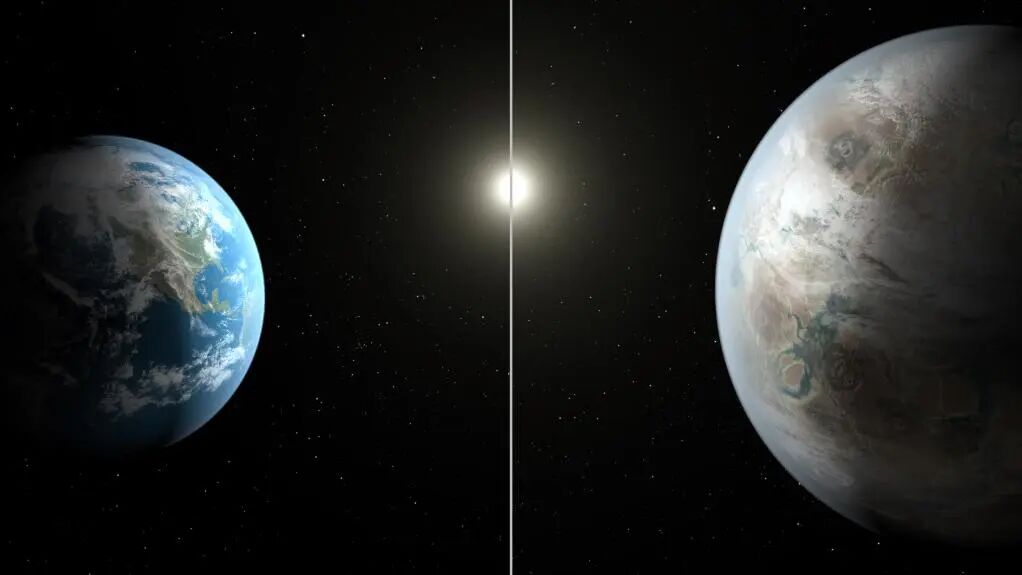Kilobytes, megabytes, gigabytes… How do we describe larger data? Millimeters, micrometers, nanometers… How small can numbers get to encompass the microscopic world? The International System of Units has recently introduced four new prefixes for constructing multiples and fractions of units, expanding the counting units for both the largest and smallest numbers to meet the demands of scientific advancement and the increasing volume of data storage.

NASA released an artist’s impression of Earth (left) and the exoplanet Kepler-452b on July 23, 2015. Xinhua News AgencyAccording to a report by National Public Radio on the 19th, the four new prefixes are ronna, quetta, ronto, and quecto. Among them, ronna represents a number followed by 27 zeros, while quetta represents a number followed by 30 zeros. Ronto and quecto are used to represent extremely small numbers, indicating 27 and 30 zeros after the decimal point, respectively.At the 27th General Conference on Weights and Measures held in Paris, France, on the 18th, the suggestion by Richard Brown, head of the National Physical Laboratory in the UK, to introduce these four prefixes into the International System of Units was adopted and took effect immediately. This is the first addition to the International System of Units since 1991.Brown told an Associated Press reporter that people are already familiar with the prefix “milli” in units like “millimeter” and “milligram,” and the newly added four prefixes can represent the largest and smallest data that have been measured so far.Previously, the largest unit prefix in the International System of Units was “yotta” (Y), representing a number followed by 24 zeros. The mass of the Earth could be described as approximately 6000 yottagrams, but with the introduction of ronna, it can now be described as approximately 6 ronnagrams; the mass of the Sun, previously described as about 2 billion yottagrams, can now be described as approximately 2000 quettagrams.

This is the “Sunway TaihuLight” supercomputer installed at the National Supercomputing Center in Wuxi, photographed on October 16, 2018. Xinhua News Agency reporter Li BoThe UK National Physical Laboratory stated that with the development of data science and digital storage, the existing largest counting units in the International System of Units have been utilized, making it necessary to introduce new unit prefixes. Brown mentioned that the newly introduced prefixes will meet future counting needs. The International Data Corporation, a market research firm in the US, predicts that by 2025, the world will generate 175 zettabytes of data. Zetta (Z) was the previous second-largest unit prefix, representing a number followed by 21 zeros.The newly added unit prefixes ronto and quecto for representing extremely small numbers will meet the research needs of quantum science and particle physics. Previously, “yocto” (y) was the smallest unit prefix, with the mass of an electron described as approximately 0.001 yoctograms, but now it can be described as 1 rontogram.Brown stated that ronna and quetta are abbreviated as R and Q, while ronto and quecto are abbreviated as r and q, respectively.He explained that the choice of ronna, quetta, ronto, and quecto as new unit prefixes was made because only the letters r and q had not been used as unit prefixes, and these four words sound like Greek and follow the convention of large unit prefixes ending in ‘a’ and small unit prefixes ending in ‘o’.
Source: Xinhua News Agency
Recommended Reading
-
26.81%! China Sets New World Record for Silicon Solar Cell Efficiency
-
Flying Cars Are Here!
-
By 2025, Heavy Pollution Weather Will Be Basically Eliminated
-
Call for Submissions for the “Night Appreciation” Column